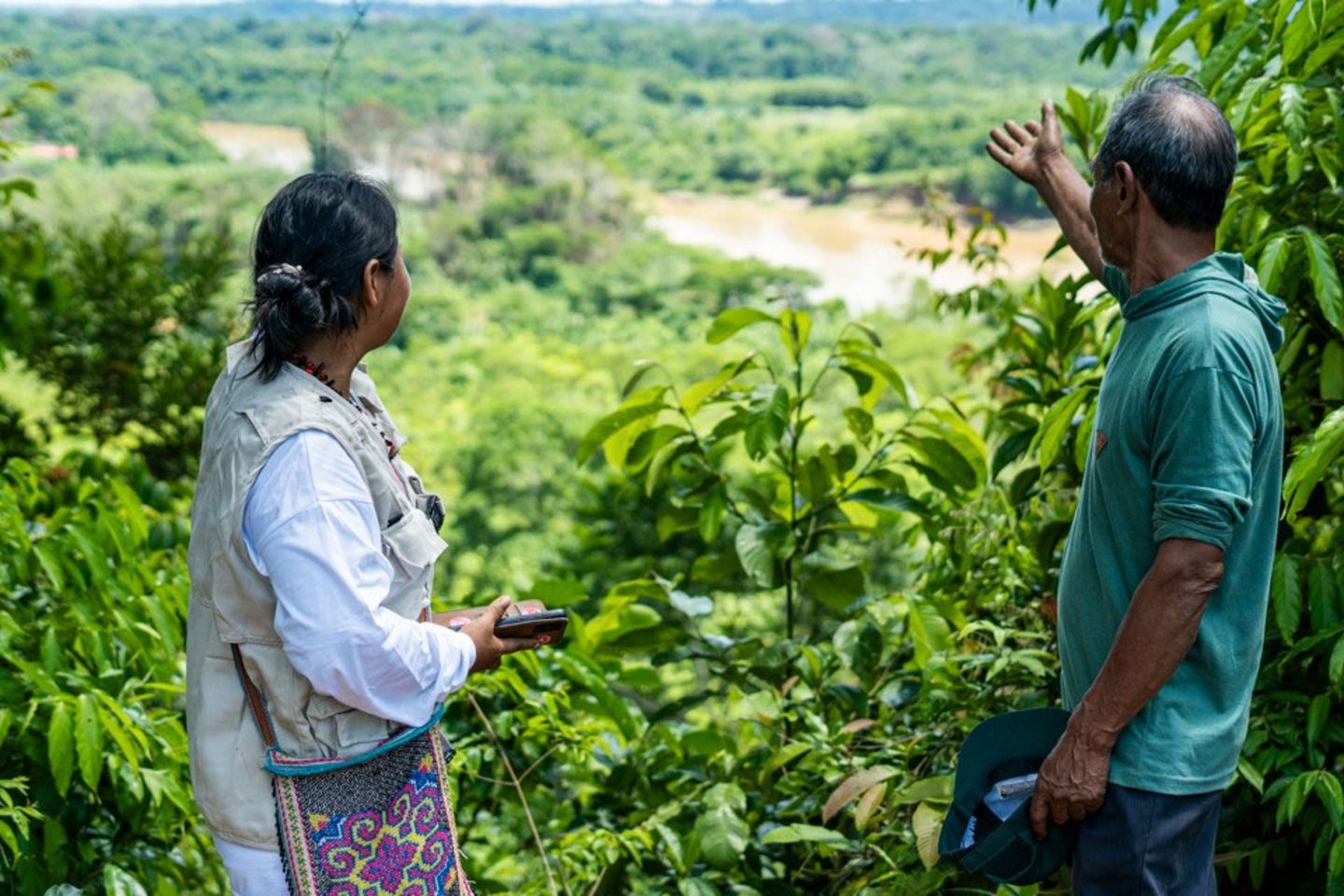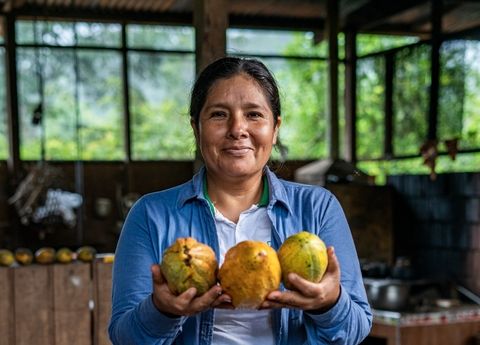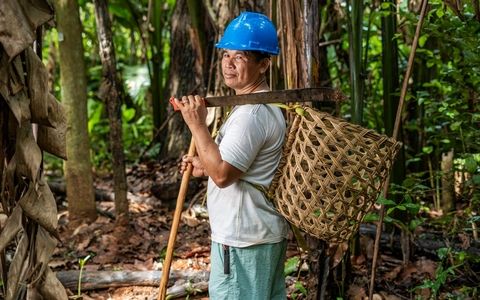
A Silent Revolution in the Amazon: Communities and the State Show That Biodiversity Conservation Can Also Generate Prosperity
In the heart of the most biodiverse forest on the planet, something extraordinary happened for the first time: public officials and indigenous leaders, accompanied by translators, sat down to engage as allies. From this dialogue emerged the Forest Investment Program (FIP), an initiative financed by the Inter-American Development Bank (IDB) with support from the Climate Investment Funds, and implemented by Peru’s National Forest Conservation Program under the Ministry of Environment. It has transformed the way biodiversity is protected and natural capital is managed in the region.
Rooted in ancestral knowledge and branching into technology that reaches satellites, the FIP has proven that a development model in which nature has a voice can not only be viable but exemplary.
This is the story of how listening to the forest changed the course of conservation in Peru.
What is the Forest Investment Program (FIP)?
FIP is Peru’s innovative approach to conserving the Amazon and promoting inclusive sustainable development. With a mobilization of $36.3 million, the program is built on a simple but powerful premise: Amazonian communities must be the architects of their own destiny.
How does it work? By granting legal titles to ancestral lands, training indigenous forest rangers, and financing sustainable productive models—such as ecotourism routes and premium Brazil nut value chains—that turn the forest into a living, profitable asset. It is conservation with an entrepreneurial spirit: each community can access up to $100,000 to transform its forest into a sustainable business, proving that the wealth of a living forest surpasses any short-term gain.
Thus, when indigenous communities and Peruvian state representatives signed the FIP agreement, something deeper than a bureaucratic formality occurred. It was the moment when native populations and producer associations embraced a promise: a standing tree can be worth more than a felled one.

The Three Major Challenges of Linking Nature and Development
- The weight of bureaucracy and the centralism of the capital.
Every application had to travel to Lima for a single stamp. The result? Four months lost to forms and approvals, while chainsaws didn’t wait. The urgency of conservation could not move at a bureaucratic pace. - The pandemic: a pause for the world, but not for deforestation.
While the world came to a standstill, satellites painted almost one million hectares in red. COVID-19 showed that protecting nature cannot depend on open offices or scheduled meetings. - The dilemma of food security.
With markets closed and the local economy paralyzed, many families faced an impossible choice: conserve the forest or feed their children.
Reinventing the project: What happens when we listen to the forest
The response promoted by the FIP was revolutionary: bring decision-making to the heart of the forest.
- Fewer forms, more action.
Twenty-seven forms were condensed into three, and 120 days of waiting were reduced to 45. Digital signatures replaced trips to the capital. Suddenly, the forest began speaking the language of efficiency. - The Green Account.
A satellite algorithm checks whether the forest is being preserved. If the trees remain standing, the payment is released. This algorithm transformed environmental monitoring into an income-generating mechanism. - Bridge Teams.
Engineers who speak Asháninka, economists who understand lunar crop cycles, local youth piloting drones. These teams design livelihood plans that respect culture, nature, and sustainability.
An inspiring story behind every hectare
Uvaldina Quispe is a member of the Cooperativa Agraria de Servicios Múltiples Sur Oriente (COOPSUR), located in the Madre de Dios region. In addition to producing cacao, she is deeply committed to conserving the forests surrounding her community. She is one of 32 families benefiting from the business plan to improve the cacao value chain, implemented within the framework of the FIP.

Technical support has been essential to this progress.
“As producers, we didn’t have much knowledge about fertilization, mixtures, spraying, management, or pruning. It is the technician who comes to guide us. I feel very happy because this program is a huge support. Cacao is the livelihood of our families,” adds Uvaldina.
Stories like hers are repeated throughout the Peruvian Amazon, where the 101 business plans promoted by the FIP have proven that conservation and economic development are not mutually exclusive. In fact, the results speak for themselves:
- 3,500 people benefited, 35% of whom are women leaders.
- 28% increase in income for program families.
- 17% reduction in deforestation in the intervention areas.
- 101 green businesses underway.
- 80,000 hectares of forest under conservation agreements.
Stories behind the numbers
- Ecolodges built by Kichwa and Amahuaca communities, in collaboration with their commercial partners.
- Cashew and cacao communities exporting directly to European chocolatiers. Farms that previously grew coca now produce some of Peru’s finest cacao bars.
All this is achieved with a focus on respecting biodiversity, cultural identity, and the smart use of natural capital.
Beyond FIP: Success is contagious

The FIP Model is Inspiring the Whole Region
In San Martín and Loreto, pioneering municipalities have started linking their taxes to forest cover: more trees, fewer taxes, they proudly proclaim, turning conservation into a tangible economic advantage.
The 10 Lessons That Will Change How You Think About Conservation
- Build the rules WITH people, not FOR people: Three governors have changed, but the regulation remains in place because it incorporates the DNA of indigenous peoples.
- Simplifying is power: Fewer procedures mean more time to protect the forest.
- Incentivize conservation, don’t punish necessity: Positive incentives generate better results than sanctions.
- Drones + ancestral knowledge = winning combo: It’s not about competing, it’s about combining forces: drones detect what elders already knew to observe.
- A good story is worth more than a thousand reports: The video of women from the community piloting drones drew more attention and support than years of technical reports.
- Change is not linear: Floods, protests, and pandemics accelerated adaptation and resilience.
- If it works, it replicates itself: Examples speak louder than words.
- Women don’t wait—they create: They designed and led business models that generated sustainable income during times of crisis.
- Transparency builds trust: Public data helped reduce misinformation and strengthen credibility. False claims dropped by 30%.
- Identity + incentives + evidence = collective pride: Communities now call this “economy with roots.”
When Development Has Roots, the Future Blooms

The FIP demonstrates that it is indeed possible to manage natural capital fairly, efficiently, and profitably. That the state can learn from the forest. That communities can lead innovative models of sustainable development. And that conserving biodiversity is more profitable than destroying it.
At the IDB, we believe that development with a future comes from working together: when the state, communities, and nature are allies, sustainable solutions flourish, transforming territories and lives.
Today, as you read this, a satellite algorithm checks that the trees are still standing. A payment is triggered. And somewhere in the Amazon, a child learns that nature can be inherited, protected, and turned into a better future.
Can you imagine combining cutting-edge technology with ancestral wisdom to protect biodiversity? Do you want to bring this model to your territory? The forest is waiting for new allies.
https://www.iadb.org/en/project/PE-L1232